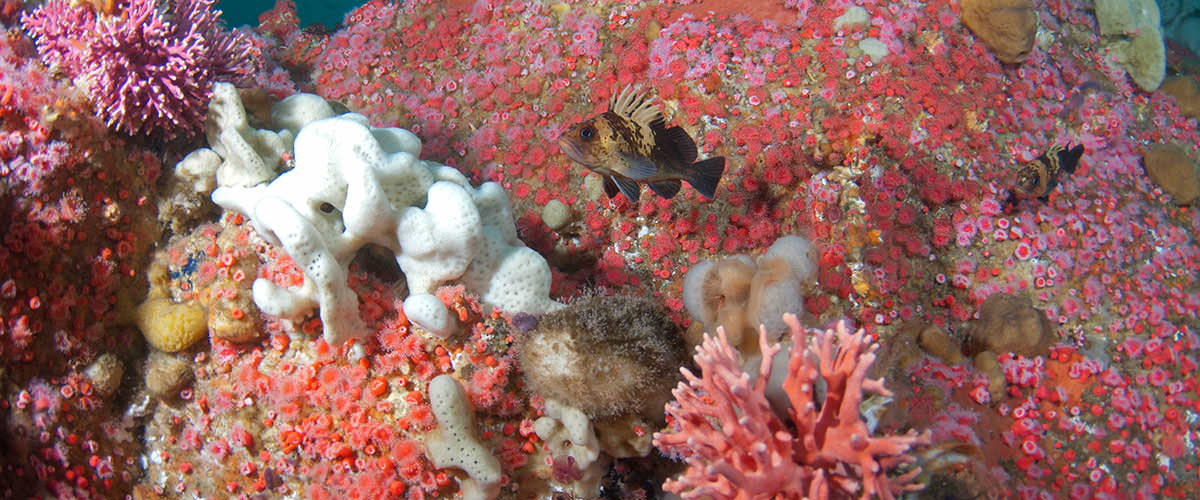
Click on individual links below to learn more about the immediate science needs for critical management issues. For a full list of management issues and science needs, please review the CBNMS Management Plan. To contact us about the science needs described below, contact the Sanctuary Research Coordinators.
-
Changing Ocean Conditions
Within the region of Cordell Bank National Marine Sanctuary (CBNMS or sanctuary), there is limited information on how atmospheric and oceanographic conditions vary on multiple temporal scales and how these forcing mechanisms influence distribution and abundance patterns of sanctuary living resources. In addition to the variability surrounding typical conditions, more information is needed on how global changes to atmospheric and oceanographic conditions will affect atmospheric and oceanographic conditions within the sanctuary and how living marine resources may be affected. (Updated 12/3/2014)
-
Deep Water Communities
Incomplete knowledge of the presence, abundance, and habitat associations of deep water species and communities within Cordell Bank National Marine Sanctuary (CBNMS or Sanctuary) hampers our ability to protect these unique and biologically diverse communities from anthropogenic disturbances. (Updated 12/3/2014)
-
Fish and Marine Zones
Large areas within Cordell Bank National Marine Sanctuary (CBNMS or Sanctuary) have been closed to fishing as part of the Pacific Fishery Management Council's rebuilding plan for over-harvested groundfish stocks. The degree that Cordell Bank contributes to regional groundfish populations and the effect of recent closures are poorly known. (Updated 12/3/2014)
-
Sanctuary Soundscape
Increasing levels of human activity in coastal waters are accompanied by increasing levels of anthropogenic underwater sound. Many marine animals, including mammals, fish and invertebrates, use sound to communicate, navigate, and feed. Information on the ambient noise environment including biological and anthropogenic sounds is needed as a first step towards understanding the impacts to resources in Cordell Bank National Marine Sanctuary (CBNMS or sanctuary), particularly endangered large whales of concern. (Updated 12/3/2014)
-
Soft Sediment Characterization and Contaminants
Although the focal point of Cordell Bank National Marine Sanctuary (CBNMS or Sanctuary) is the rocky, high relief bank, the majority of habitat within the sanctuary is soft sediment. This habitat type has been underrepresented in characterization, research, and monitoring activities and therefore there is little information about the habitat, species that rely on it, and potential stressors such as contaminants. Characterization of this habitat is needed to better assess management strategies and to assess the risks that contaminants play in this habitat. (Updated 12/3/2014)
-
Substrate Characterization
Limited baseline information on substrate extent and distribution reduces the ability of Cordell Bank National Marine Sanctuary (CBNMS or Sanctuary) to understand resources and recognize or respond to existing and emerging pressures and threats to Sanctuary resources. (Updated 12/3/2014)
-
Whales and Shipstrikes
Large vessel traffic in the San Francisco Bay region overlaps with hotspots for large whales in Cordell Bank National Marine Sanctuary (CBNMS or Sanctuary). Understanding factors related to vessel traffic and the ecology and behavior of whales is needed for effective management actions to protect whales. (Updated 12/3/2014)

